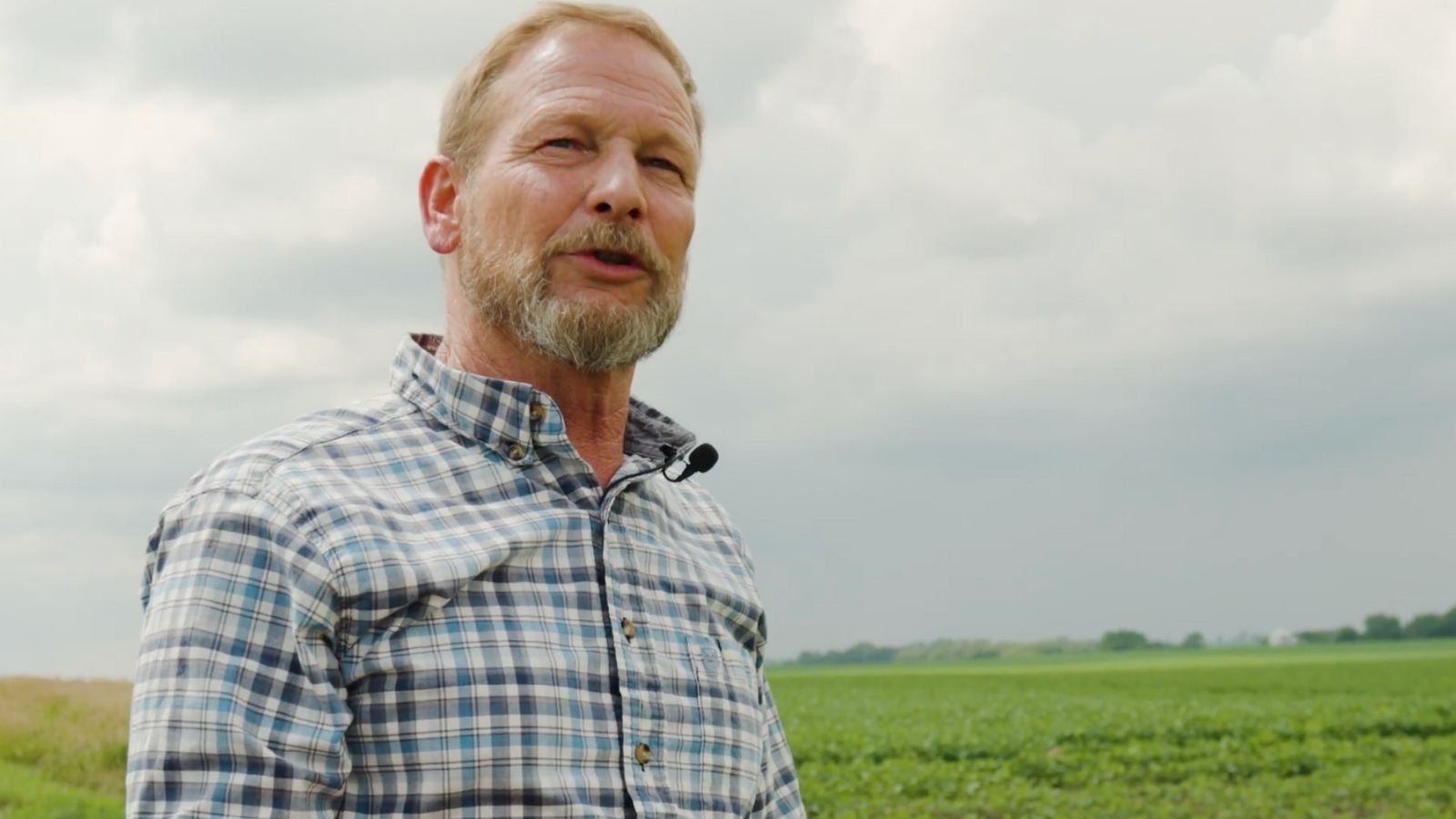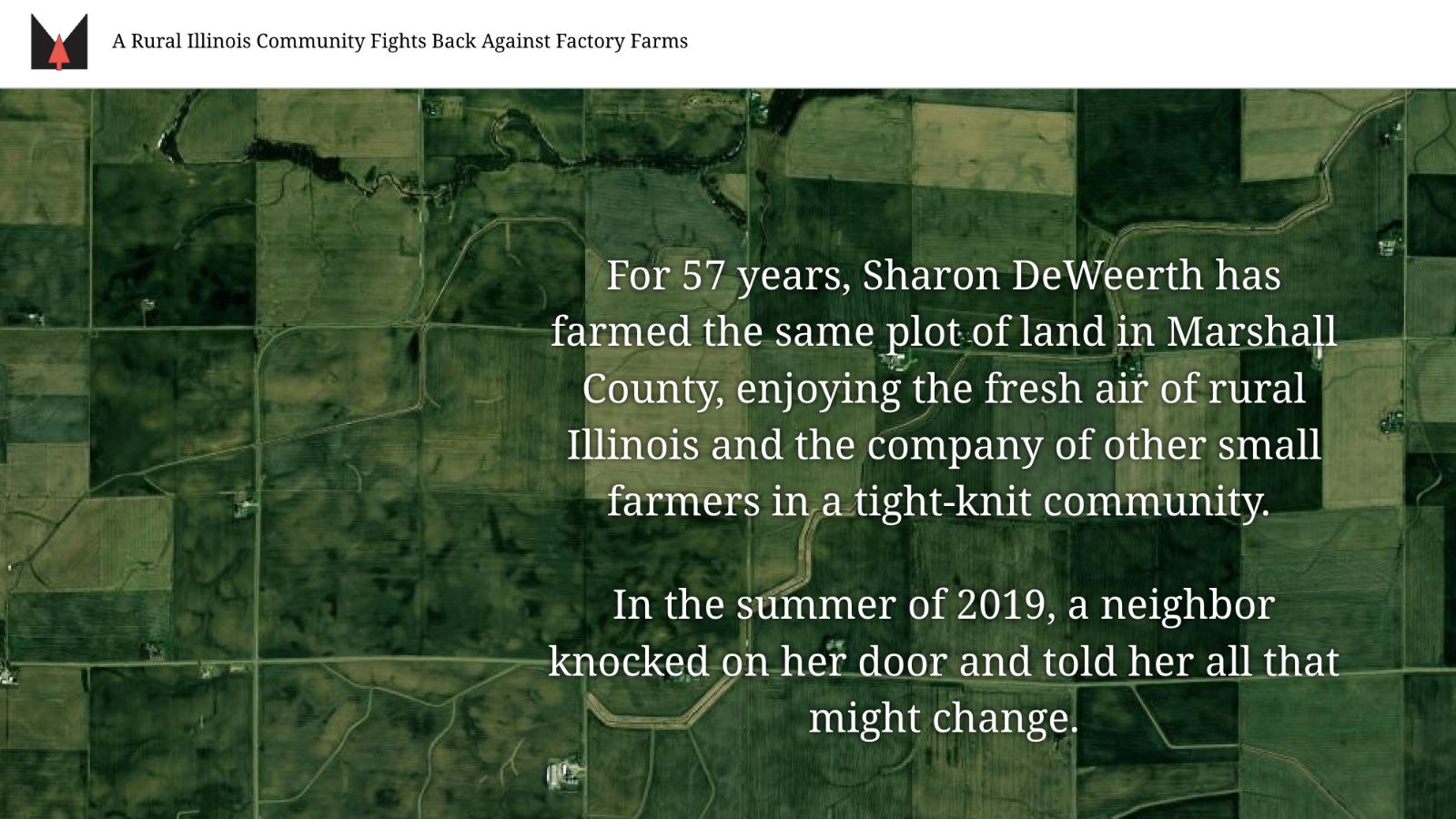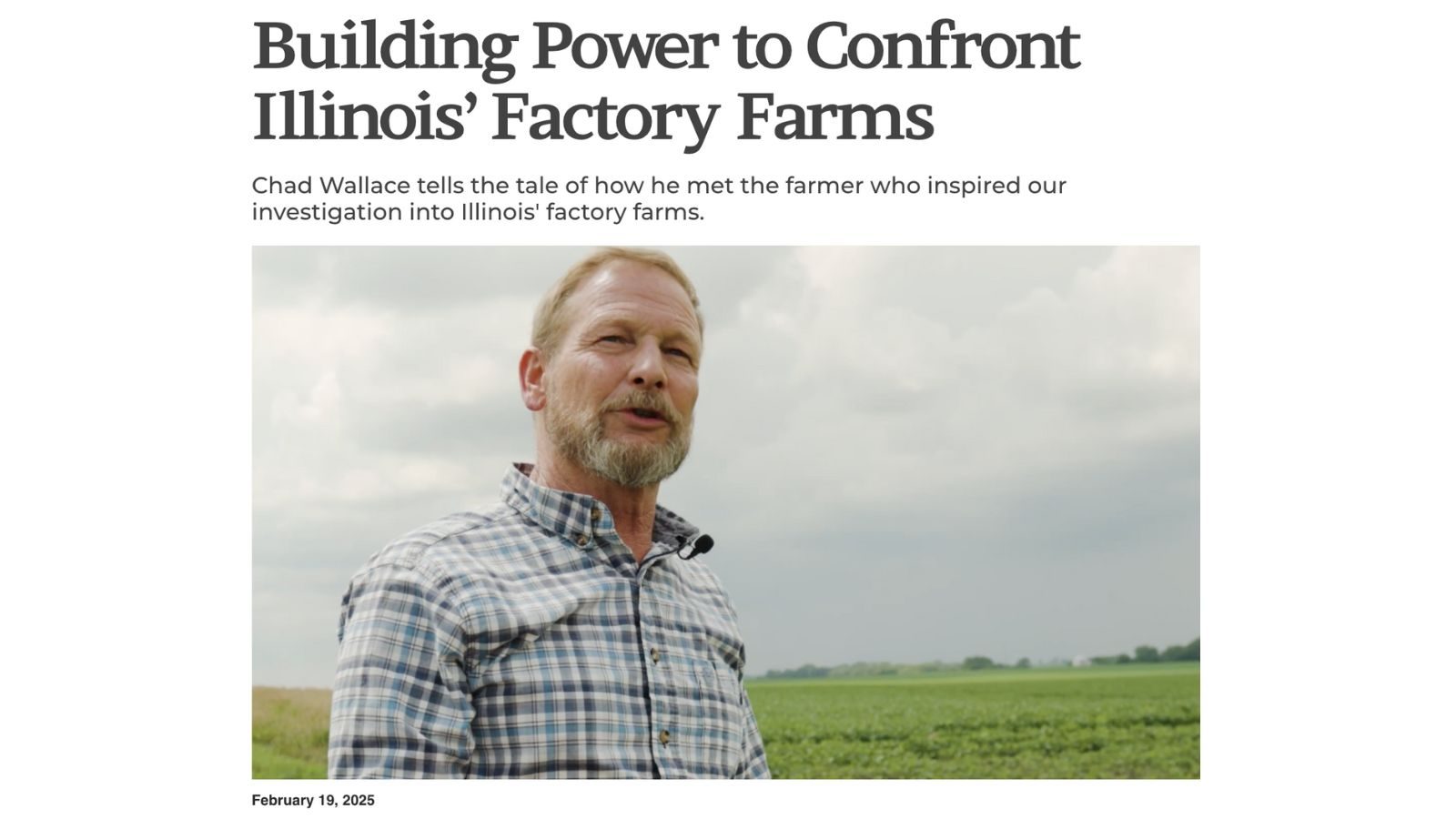Illinois Livestock Reform Coalition
CAFOs: Environment and Public Health Threat
Throughout rural Illinois, a deadly industry wreaks havoc on the environment, public health, and the future of family farms.
Confined Animal Feeding Operations (CAFOs) spill pollution into the land surrounding them. In fact, “livestock factories” may be the most accurate way to describe them.
CAFOs are notorious for causing:
- air and water pollution
- harmful algal blooms
- antibiotic resistance
- water scarcity

What is a CAFO?
According to the Illinois EPA, a CAFO is where livestock such as pigs, cows, turkeys and chickens are kept in confined environments and raised for consumption of meat and other animal products. This type of operation was initially created to reduce the amount of resources conventional agriculture requires.
Here’s the problem.
CAFOs in Illinois are now built to hold slightly fewer grown swine — 2480 — than the threshold needed — 2500 — for an Illinois Department of Agriculture (IDOA) informational hearing in accordance with the Livestock Management Facilities Act. Owners can later increase these numbers once the operation is constructed, bypassing public input. This means that for most CAFOs to be constructed in Illinois, no hearing is legally required.
They harm rivers and wetlands.
“Illinois EPA doesn’t really have regulations with any teeth,” says Danielle Diamond, attorney and co-founder of the Illinois Coalition for Clean Air and Water. Millions of pounds of nutrient runoff from CAFOs harm those in the immediate communities where they are located. They also harm rivers and wetlands downstream throughout the Mississippi River watershed.
Has anyone stopped one?
In 2023, IECEF Food Systems Policy Director Chad Wallace set out to find folks in rural Illinois living on the frontlines of these livestock factories. That October, he met a tenacious farmer and her neighbors. They told him the story of how they took on the agriculture industry—and won.

A Family Farmer's Fight for Survival
Sometimes a story simply must be told. And the only people who can do it justice are those who lived it. After hearing that a confined feeding operation was to be constructed within view from her house, family farmer Sharon DeWeerth was unsure what this would mean and what she should do about it. She did her homework, and in doing so, rallied the troops to protect the way of life she and her community had enjoyed for generations.
“How can you justify taking 28 acres out of good farmland and good black, beautiful soil that we have out there and turning it into a factory?”
–Sharon DeWeerth

These are Not Farms. They are Factories.
Video: Sharon DeWeerth and her friend Vicki Waldschmidt reflect on the letter Sharon submitted to local papers. Her goal? Raise awareness of the threat of livestock factories to family farms and communities.
"A Rural Illinois Community Fights Back Against Factory Farms"
IECEF, in partnership with Midstory, worked together to help share Sharon’s story. Our resulting StoryMap combines data and narrative to chronicle DeWeerth’s journey of late-night research, neighborhood visits and public hearings as she fought against the proposed CAFO construction. She says she would do it all again in a heartbeat.

About Midstory
Midstory is a 501(c)(3) non-profit thinkhub that progresses the narrative of the Midwest by incubating bright, diverse and interdisciplinary thinkers to exchange ideas and envision the future of our region through multimedia storytelling and solutions-oriented research since its founding in 2018.
Building Power in Illinois’ Rural Communities
CAFOs in Illinois
As of 2020, there are currently more than 21,000 large CAFOs operating in the U.S., less than a third of which have National Pollutant Discharge Elimination System (NPDES) permits, according to the EPA. Today, more than 90% of all livestock raised in the U.S. are confined in CAFOs, but not even the EPA knows the exact amount of operations or their locations, according to the Natural Resources Defense Council.
Of all the CAFO applications submitted in Illinois in the past decade, the majority (680) received permission and were eventually constructed. According to Wallace, the IDOA has never denied a notice of intent to construct application.
Farmer Voices are Silenced
Rural residents and their concerns about CAFOs are silenced due to the current regulatory process.
Folks in these communities care deeply about their families and friends’ livelihoods, the long-term success of their own farm operations, and stewardship of the land. However, these priorities are not represented by their lawmakers, who are often beholden to powerful agriculture industry interests rather than those of the family farmer.

Illinois Livestock Reform Coalition Launch
Over the past two years, IECEF has laid an important foundation through extensive outreach and coalition-building in rural communities that have been negatively affected by CAFOs.
This is a space for community members to share their own CAFOs impact stories. In the long term, IECEF sees this effort as an essential step toward building power in Illinois’ rural communities.
Together, we’re collaborating to develop solutions that would restore the public’s voice in the process and reduce harm caused by CAFO operations.

How Did We Find Sharon?
On the IEC Blog:
Chad Wallace tells the tale of how he met Sharon DeWeerth, the farmer who inspired our investigation into Illinois’ factory farms.


